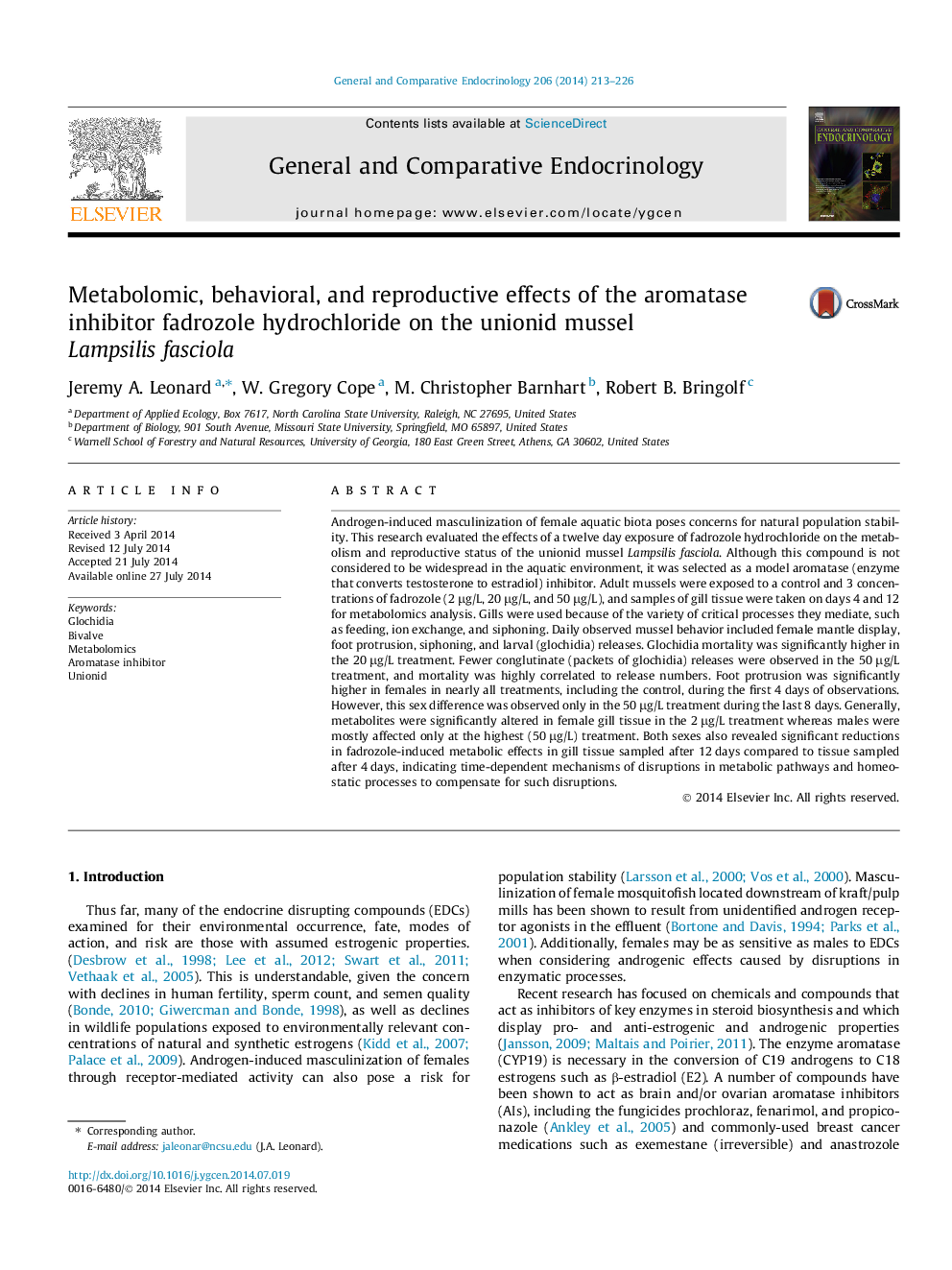| Article ID | Journal | Published Year | Pages | File Type |
|---|---|---|---|---|
| 2800112 | General and Comparative Endocrinology | 2014 | 14 Pages |
•We examined the effects of a model aromatase inhibitor on a unionid mussel.•Endpoints of interest included female reproduction, adult behavior, and metabolism.•Significant reduction of female lure display occurred at mid-level concentrations.•Female metabolites were adversely affected at the lowest tested concentration.•Alterations of metabolites in both sexes were reduced after prolonged exposure.
Androgen-induced masculinization of female aquatic biota poses concerns for natural population stability. This research evaluated the effects of a twelve day exposure of fadrozole hydrochloride on the metabolism and reproductive status of the unionid mussel Lampsilis fasciola. Although this compound is not considered to be widespread in the aquatic environment, it was selected as a model aromatase (enzyme that converts testosterone to estradiol) inhibitor. Adult mussels were exposed to a control and 3 concentrations of fadrozole (2 μg/L, 20 μg/L, and 50 μg/L), and samples of gill tissue were taken on days 4 and 12 for metabolomics analysis. Gills were used because of the variety of critical processes they mediate, such as feeding, ion exchange, and siphoning. Daily observed mussel behavior included female mantle display, foot protrusion, siphoning, and larval (glochidia) releases. Glochidia mortality was significantly higher in the 20 μg/L treatment. Fewer conglutinate (packets of glochidia) releases were observed in the 50 μg/L treatment, and mortality was highly correlated to release numbers. Foot protrusion was significantly higher in females in nearly all treatments, including the control, during the first 4 days of observations. However, this sex difference was observed only in the 50 μg/L treatment during the last 8 days. Generally, metabolites were significantly altered in female gill tissue in the 2 μg/L treatment whereas males were mostly affected only at the highest (50 μg/L) treatment. Both sexes also revealed significant reductions in fadrozole-induced metabolic effects in gill tissue sampled after 12 days compared to tissue sampled after 4 days, indicating time-dependent mechanisms of disruptions in metabolic pathways and homeostatic processes to compensate for such disruptions.
